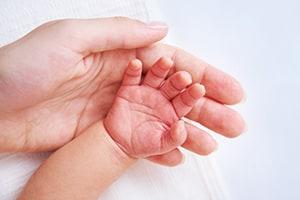Help Center
Online Resource Center for Information on Birth Injuries.

Unfortunately, there is no cure for cerebral palsy. Cerebral palsy is caused by damage to certain parts of the brain during pregnancy or childbirth. Once the cells in the brain are injured, they can never regenerate which means cerebral palsy is a permanent condition.
That is the bad news. The good news is there are many effective treatment options that can help children with cerebral palsy live more productive and independent lives. If your child has cerebral palsy, understanding the various treatment options currently available and what results you can expect from them is critically important. Cerebral palsy is not a uniform condition. The best treatment plan for your child will vary depending on what type of cerebral palsy they have, the severity and other personal needs and values.
There is even more good news. We may be on the precipice of a new era in cerebral palsy research. There is increased awareness of the possibilities of changing the lives of patients through technology. More money is being spent than ever to find the best therapies for cerebral palsy. There has been a massive wave of stem cell research which may be a game-changer for many central nervous system disorders like cerebral palsy. What is the ultimate end game? A cure.
In the meantime, there are many things that children who suffer from cerebral palsy can do that might meaningfully improve their lives.
The cornerstone of virtually all cerebral palsy treatment plans is physical therapy. Rehabilitative physical therapy offers a range of benefits and does more to help children will all types of cerebral palsy than any other method of treatment. For cerebral palsy, physical therapy aims to minimize and manage the child’s physical disabilities through target muscle training.
Even within the same types of cerebral palsy, the physical disabilities of each child tend to be highly unique so physical therapy programs are custom designed. A physical therapist will examine your child and assess the unique patterns of their physical disabilities. Based on this assessment a customized physical therapy program will be developed to address the specific needs of your child. Physical therapy programs involve a series of common techniques, including:
Some physical therapy programs may also utilize forms of aqua therapy in the pool. Aquatic physical therapy has recently proven to be highly effective for children with certain types of cerebral palsy.
Physical therapy treatment is not just for older children with cerebral palsy. A physical therapy program should be started as soon as possible, including early infancy. Research has shown that starting physical therapy early on (under 12 months) greatly increases the long-term results of the treatment. Of course, the specific treatments and programs will change over time as the child grows. For babies and younger children, physical therapy care is usually provided in the home. Older children might go to pediatric therapy facilities that are specifically designed for providing physical therapy to children.
What has been proven particularly effective? A 2019 study suggests that the best gains are achieved with CIMT (constraint-induced movement therapy), task-oriented functional training, and gait training.
In addition to physical therapy, many children with cerebral palsy (particularly certain types) may also benefit from occupational therapy treatment. While physical therapy centers on gross motor and muscle rehab, occupational therapy focuses on the development of fine motor skills and movement. An occupational therapist can help children with cerebral palsy with things like writing, getting dressed, using a cell phone or computer, etc. Being able to do these seemingly simple things can make a huge difference for many children in terms of their independence and quality of life.
What does not work? There is probably limited benefit in passive stretching. Neurodevelopmental therapy (NDT), which uses guided movements to treat CMS patients, has many advocates. But there is not a lot of good science supporting its efficacy. Might these things work for your child? It is impossible to say. The most important thing is to be talking to your child’s therapist and make sure they are up to speed on the latest studies. You should be willing to experiment with anything that does not have the potential to harm your child. You know your child. Trust yourself to make the right choices.
There is no universal surgical procedure available to help all children with cerebral palsy. But there are surgical treatment options that can be utilized to alleviate or manage specific physical symptoms caused by cerebral palsy:
Cerebral palsy has a complex etiology. So there is not one particular medication that targets the challenges of cerebral palsy. But medication modalities for cerebral palsy are expected to continue to grow. Most treatment programs for cerebral palsy include medication to help manage or reduce various symptoms. Much like other treatment options, the types of medication available will vary depending on the type of cerebral palsy involved. The most commonly used medications for cerebral palsy treatment fall into the following categories: